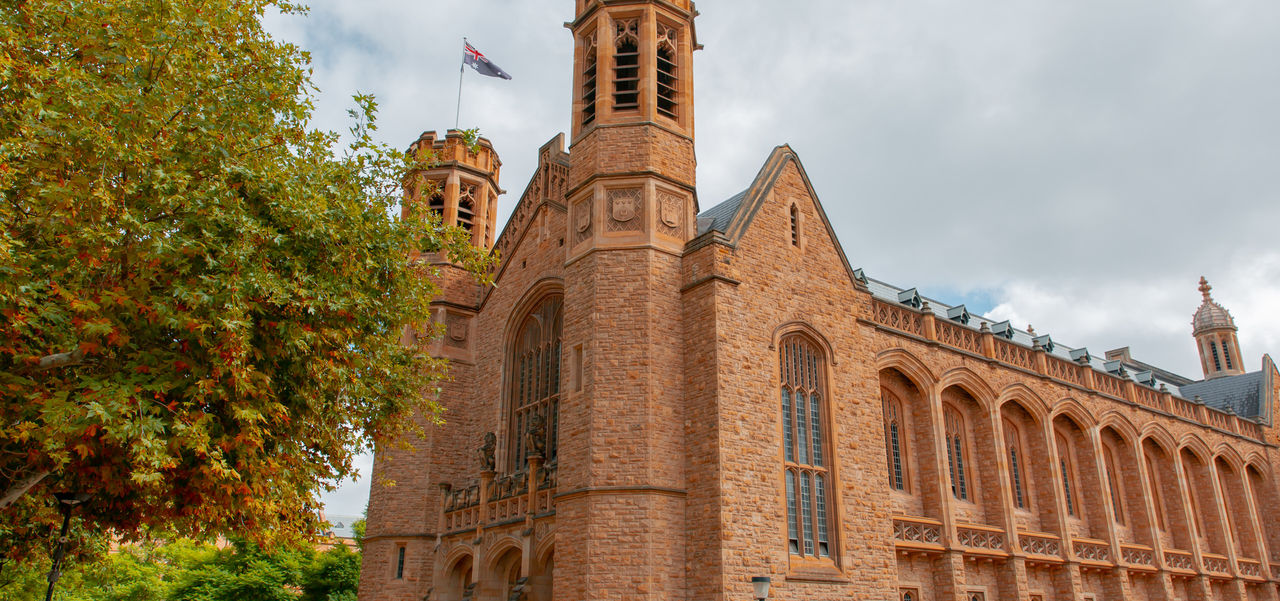Bonython Hall is a centrepiece of the University of Adelaide campus and is hard to miss when walking down North Terrace.
The construction of Bonython Hall was made possible thanks to a £40,000 donation to the University of Adelaide from the owner of The Advertiser newspaper, Sir John Langdon Bonython.
Bonython's preferred location for the hall was where it stands today, though this caused debate within the press and parliament at the time, as the site would prevent Pulteney Street from cutting through the northern parklands as envisaged by Colonel William Light's plan for Adelaide.
An alternative site on Jubilee Oval was proposed, though land on North Terrace had already been given to the University of Adelaide, and the University Council would not agree to a road bisecting the campus. Eventually, construction went ahead on Bonython's preferred site.
On 8 September 1936, the building was opened by Governor-General Lord Gowrie and packed with 1,400 guests, undergraduates and members of the public. Rest assured, none of the guests would've been celebrating the opening with a boogie, as it is well known that Bonython insisted on deliberately sloping the floors to prevent the hall from being used for such silliness.
Today, Bonython Hall remains owned and used by the University of Adelaide for ceremonies, events and concerts both public and private.





